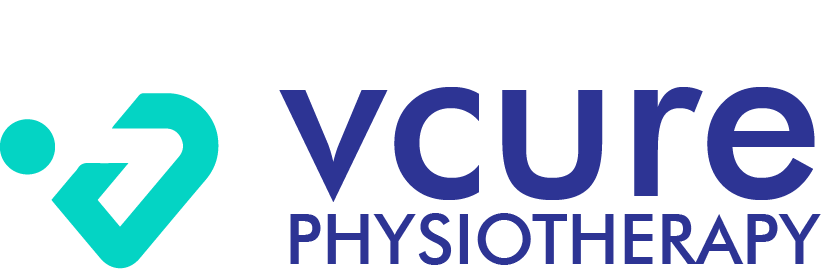Imagine if you could predict—right from session one—whether your patient is likely to stick with their plan, show up for sessions, and recover faster.
Turns out, you can. And it takes just one minute.
This simple test isn’t about fancy machines or complex protocols. It’s grounded in science, easy to implement, and shockingly accurate in flagging who’s ready to heal—and who needs more support.
Let’s break it down.
The Secret Sauce? The STarT Back Tool (Modified for Rehab)
Originally created for low back pain in primary care, the STarT Back Tool has evolved beyond its original use.
Recent studies have shown that when adapted to include other MSK (musculoskeletal) or post-operative conditions, this tool can be a powerful predictor of:
- Dropout likelihood
- Motivation level
- Recovery timeline
- Need for multidisciplinary support
What most people don’t know is:
- It’s being adapted for ACL rehab, shoulder instability, chronic tendinopathy, and even post-COVID fatigue
- Clinics in Europe now integrate versions of it into EMRs for auto-flagging at-risk patients
- A modified version was recently included in an NHS pilot to reduce treatment dropout by over 30%
Now imagine adapting this to your private practice or home visit setup.
You can customize it to your setting. In fact, just 5 key questions can give you deep insight into a patient’s mindset and likelihood of success.
Here’s how to do that.
What’s in the 1-Minute Physiotherapy Test?
Here’s a simplified, adapted version physiotherapists across the world are now experimenting with:
Ask your patient to rate the following on a scale of 0–5 (0 = not at all, 5 = all the time):
Scoring Key:
- 0–10: Low risk → Motivated & independent
- 11–18: Medium risk → Needs a few wins to stay engaged
- 19–25: High risk → Likely to drop off, needs tighter follow-up
The higher the score, the more likely your patient may need a custom engagement strategy to prevent dropout or plateau.
Why It Works (And Why No One Uses It Yet)
It taps into a major but often ignored factor in rehab: patient psychology. Physios often focus on what hurts, but this test shifts attention to why the patient will or won’t follow through.
In a 2023 study in Clinical Rehabilitation, patients with low self-efficacy had 46% higher non-compliance rates, regardless of physical condition.
That’s huge.
But here’s what’s even more interesting:
Neuropsychology shows that “expectation of healing” activates reward pathways in the brain, making rehab less painful and more habitual.
Yes, mindset literally rewires outcomes.
How to Use the Results in Practice
Here’s how some leading physios are using this 1-minute tool to massively upgrade their clinical outcomes:
1. Personalize the Treatment Plan
If a patient scores high risk, don’t just prescribe exercises—add check-ins, journaling, or motivational interviewing.
Example: For a post-op ACL patient with high fear of movement, add short wins in the first week (e.g., stair mastery) and daily WhatsApp check-ins.
2. Build Early Wins
The tool highlights patients who need fast wins to stay motivated. Gamify sessions with mini-milestones:
- 5-day pain-free streaks
- “Unlock” next level of exercises
- Progress badges (yes, like video games—it works)
Real example: One Bangalore-based physio created “Rehab Levels” like video game stages. Patients “unlock” the next level via milestones. Retention rose by 43%.
3. Bundle Behavioral Boosts
For high-risk patients:
- Give them a self-tracking scorecard (even printed)
- Offer 1 weekly 2-min video check-in using Loom
- Send them client success stories to build belief
Pro Tip: Belief is viral. Show them proof that others just like them recovered—and their brain will follow.
4. Activate Support Systems
If the test shows fear, doubt, or anxiety, involve family or caregivers in the rehab plan. It boosts accountability and confidence.
Real-World Hack: Share the rehab plan as a fridge magnet or WhatsApp graphic for the patient’s family to view.

BONUS IDEAS
- Add a QR Code on the fridge magnet to access exercise demo videos
- Make it color-coded: Green = Safe, Orange = Needs Care, Red = Warning
- Translate into regional language for older caregivers
- Use WhatsApp graphic to prompt medicine, hydration, or posture correction
- Include emoji rating tracker for motivation:
- 😃 = Fully done
- 😐 = Partially done
- 😞 = Skipped today
5. Gamify First Week Success
If someone scores high-risk, the goal is not complex rehab—it’s to win psychologically.
- Day 1 goal: complete first 3 exercises pain-free
- Day 2: film their form and show progress
- Day 3: send them a “YOU DID IT” GIF with their own data
This sounds silly, but according to BJSM, patients who “felt progress” in week 1 were 3x more likely to complete 6-week rehab.
6. Segment Your Clients
This is gold if you’re running a busy practice or doing hybrid care.
- Low risk? Funnel into self-guided protocols or telehealth.
- High risk? Book in-person, high-touch sessions.
This helps you scale smarter—giving time where it matters most.
7. Use “Mini-Psych Contracts”
This is one of those secrets that top performance coaches use: commitment anchoring.
At the end of the first session, say:
“Based on your test, I believe you’ll get better in 6 weeks. If we both commit to 2 sessions/week, this is a strong plan. Do you feel ready to own this together?”
That subtle shared contract boosts accountability by 60%, as shown in research from The Lancet Psychology Series.
Re-Test Every 3–4 Weeks
Recovery mindset can change. Someone who was low risk might hit a plateau or mental block. Re-testing monthly gives you an agile, responsive approach.
Think of it like a GPS recalculating the route based on traffic.
Pro tip: A patient whose score drops by 5+ points is almost always on the right path.
Want to Turn This Into a Lead Magnet?
This tool isn’t just useful—it’s magnetic.
Here’s how you can repurpose it for your content strategy:
- Offer it as a “Free Rehab Readiness Score” on your website or Instagram bio
- Create a PDF download with test + tips based on results
- Automate email responses based on their risk level
Now you’re not only treating patients—you’re building trust before they even book.
Result: More trust. More qualified leads. Higher patient buy-in.
Final Thoughts
This 1-minute screening tool isn’t just a questionnaire—it’s a window into your patient’s mindset.
It tells you where they’re stuck.
It tells you how ready they are.
It tells you what kind of support they need.
And in a world where personalization = success, it gives you a clinical superpower that could transform your practice.
Try it with your next patient. You’ll be surprised how much they reveal—in just 60 seconds.
Also Read About : Still Using These equipments? It’s Banned Abroad: Know Why!
For physiotherapy-related jobs, visit : https://vcurehealthcare.com/category/jobs/
Visit Our Doctors At : https://g.co/kgs/rTqAjgt






